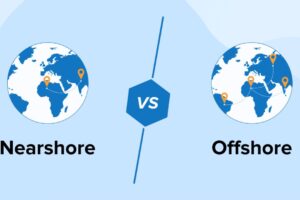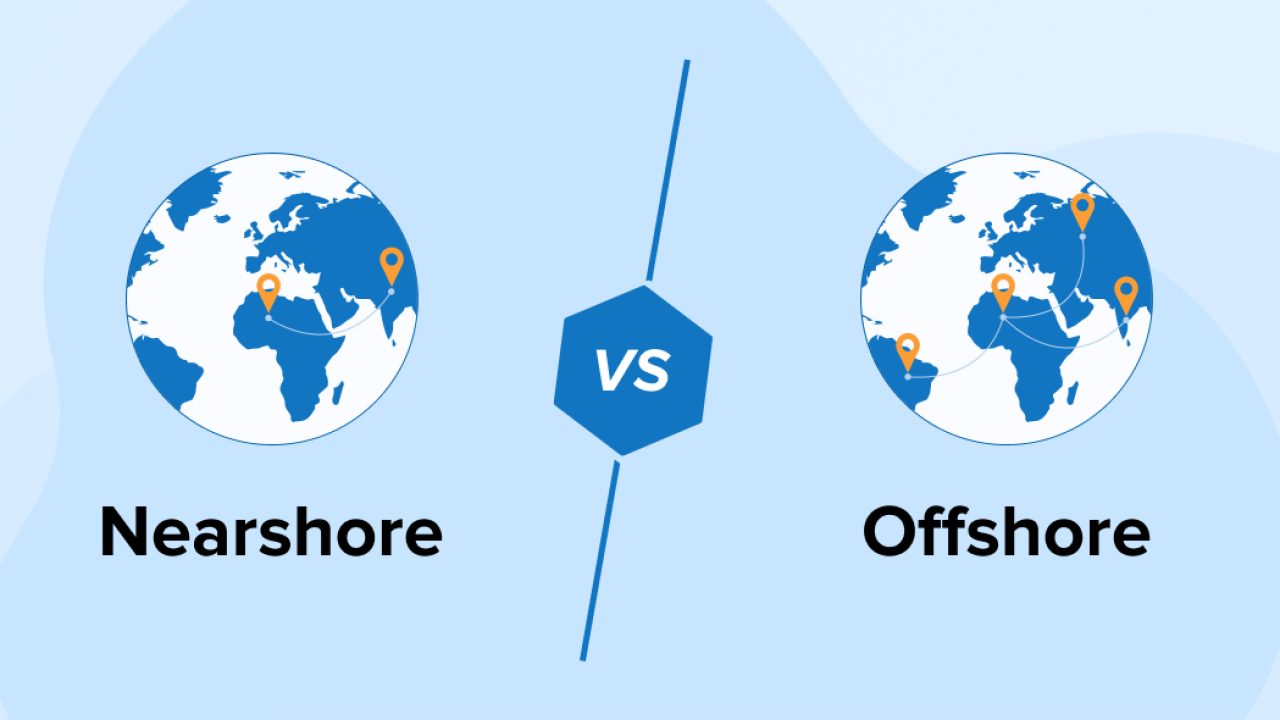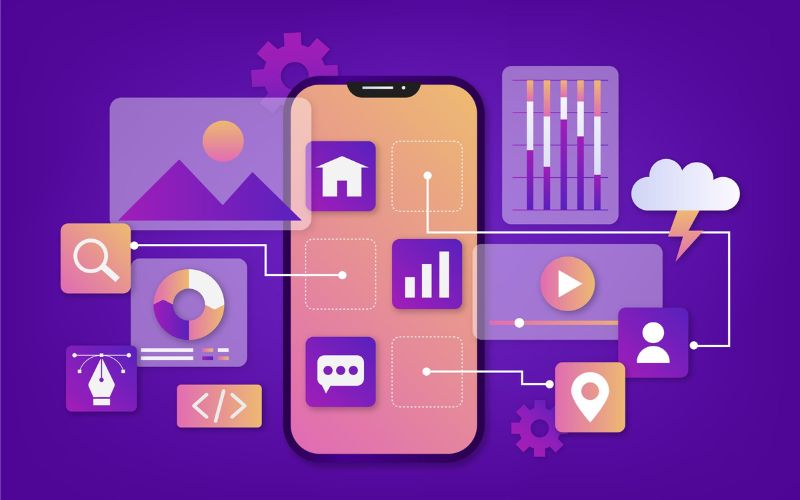What Are the Key Differences Between Nearshore and Offshore AI Development Agencies?
In the evolving world of artificial intelligence (AI), choosing the right outsourcing strategy for software development plays a crucial role in project success. Businesses seeking to implement AI solutions often partner with external development agencies to save costs, access talent, and enhance scalability. However, deciding between nearshore software development services and offshore AI development agencies can be challenging.
In this blog, we’ll explore the key differences between nearshore and offshore AI outsourcing models. We’ll discuss how each approach impacts project collaboration, timelines, and costs, and help you determine which model suits your AI needs.
Why Businesses Turn to Outsourced AI Development Agencies
AI adoption requires specialized expertise that might not always be available in-house. Whether companies need to implement AI customer service software or develop advanced machine learning models, many turn to artificial intelligence development companies for assistance. Outsourcing offers flexibility, speed, and access to skilled developers at a lower cost than maintaining internal AI teams.
AI outsourcing can broadly follow two models:
- Nearshore development services: Collaborating with agencies in nearby countries or regions.
- Offshore development agencies: Partnering with companies in distant regions with different time zones and business cultures.
Choosing between these models requires an understanding of how each affects project dynamics, quality, and outcomes.
What Are Nearshore Software Development Services?
Nearshore software development refers to working with AI development agencies located in neighboring or nearby countries. The regional proximity allows companies to collaborate in similar time zones, improving communication and speeding up project execution.
Key Benefits of Nearshore AI Development
- Improved Collaboration and Communication
Proximity enables real-time meetings and quicker decision-making. Language and cultural similarities also minimize misunderstandings, ensuring smoother communication throughout the development process. - Agile Project Management
Working in the same or similar time zones supports agile development practices, allowing for faster iterations and continuous feedback. This makes nearshore agencies ideal partners for building AI customer service software that requires regular updates and refinements. - Access to Regional Talent Pools
Nearshore services offer access to specialized talent within the same region. Many artificial intelligence development companies in nearshore locations have deep expertise in industry-specific AI solutions, including finance, healthcare, and retail. - Faster Issue Resolution
Having the development team close by enables rapid troubleshooting and issue resolution. This reduces delays, especially for complex AI projects that require frequent adjustments.
What Are Offshore AI Development Agencies?

Offshore AI outsourcing refers to working with development teams in countries located far from the client’s home country, often in entirely different time zones. This model is popular for its cost advantages and access to a vast global talent pool.
Key Benefits of Offshore AI Development
- Cost Savings
Offshore agencies, particularly in regions like India, the Philippines, and Eastern Europe, offer custom software development services at significantly lower costs than nearshore or in-house teams. - Access to Diverse Expertise
Offshore agencies often have large teams with expertise in a wide range of technologies and industries. This diversity makes them valuable partners for building complex solutions such as AI customer service software integrated with multiple business systems. - 24/7 Development Cycle
Due to time zone differences, offshore teams can continue working after the client’s working hours, ensuring that projects progress around the clock. This is particularly beneficial for projects with tight deadlines.
Nearshore vs. Offshore AI Outsourcing: Key Differences
Let’s compare nearshore and offshore software development services across several critical dimensions to help you make an informed decision.
1. Communication and Collaboration
- Nearshore: Easier collaboration due to proximity, shared time zones, and cultural similarities. Real-time meetings and agile practices become more practical.
- Offshore: Communication can be challenging due to time zone differences and cultural barriers. Coordination may require asynchronous communication tools.
2. Cost Comparison
- Nearshore: While nearshore services are more affordable than in-house development, they may not offer as significant cost savings as offshore options.
- Offshore: Offshore agencies provide the most cost-effective solutions but may require additional management overhead to ensure quality and timely delivery.
3. Project Management Approach
- Nearshore: Nearshore agencies support agile project management, making them ideal for AI customer service software and other projects that require frequent iterations.
- Offshore: Offshore agencies may follow a more structured project management approach due to time zone differences, which could limit flexibility during development.
4. Scalability and Talent Access
- Nearshore: Offers access to specialized talent within a limited regional pool, with a focus on quality over quantity.
- Offshore: Provides access to a vast global talent pool, making it easier to scale teams quickly for large, complex AI projects.
What Are the Pros and Cons of Nearshore vs. Offshore AI Development Services?
Nearshore AI Development Services: Pros and Cons
Pros:
- Faster communication and collaboration
- Agile development practices
- Better cultural alignment
- Easier integration with existing business processes
Cons:
- Higher costs compared to offshore services
- Limited access to a global talent pool
Offshore AI Development Services: Pros and Cons
Pros:
- Significant cost savings
- Access to a diverse talent pool
- 24/7 development cycle
Cons:
- Communication challenges
- Potential cultural barriers
- Greater project management complexity
How Nearshore AI Development Agencies Improve Project Collaboration
Nearshore agencies excel at fostering effective collaboration through regional advantages. Their ability to work in real-time with clients ensures that project milestones are achieved faster. Additionally, the agile development models used by nearshore teams allow for quick adaptations to changing project requirements.
For example, companies building AI customer service software benefit from nearshore teams that can implement updates based on user feedback almost instantly. This flexibility makes nearshore services an excellent choice for projects that require frequent interaction between the client and the development team.
What Companies Should Know About Outsourcing AI Software Development
Before choosing between nearshore and offshore outsourcing, businesses should consider the following factors:
- Project Complexity and Timeline
For complex AI projects that require constant feedback, nearshore agencies may be the better option due to their agile practices. Offshore agencies, on the other hand, are suitable for long-term projects with well-defined scopes. - Budget Constraints
If cost is a primary concern, offshore outsourcing provides significant savings. However, businesses must be prepared to manage potential communication challenges and cultural differences. - Technology and Expertise Requirements
Some industries, such as healthcare and finance, may require specific expertise in AI development frameworks and regulatory compliance. Businesses in these sectors should prioritize finding a nearshore AI development agency with relevant experience. - Long-Term Support and Maintenance
Both nearshore and offshore agencies can offer ongoing support, but nearshore teams may provide more personalized services due to their proximity.
Conclusion: Choosing the Right AI Development Model for Your Business
Both nearshore and offshore AI development agencies offer unique advantages, and the right choice depends on your business’s specific needs. Nearshore software development services are ideal for companies that prioritize collaboration, flexibility, and fast delivery. On the other hand, offshore agencies provide access to a vast talent pool at a lower cost, making them a suitable option for businesses with budget constraints and well-defined projects.
When deciding between the two, consider factors such as communication needs, project timelines, budget, and required expertise. By understanding the key differences and aligning them with your business goals, you can choose the best outsourcing model for your AI project.
FAQs: Nearshore vs. Offshore AI Development Agencies
What are the pros and cons of nearshore vs. offshore AI development services?
Nearshore services offer better collaboration and cultural alignment, while offshore services provide significant cost savings but may present communication challenges.
How do nearshore AI development agencies improve project collaboration?
Nearshore agencies enable real-time communication and agile project management, making them ideal for projects that require frequent feedback and iterations.
What should companies know about outsourcing AI software development?
Companies should consider project complexity, budget, expertise requirements, and long-term support when choosing between nearshore and offshore outsourcing models.











